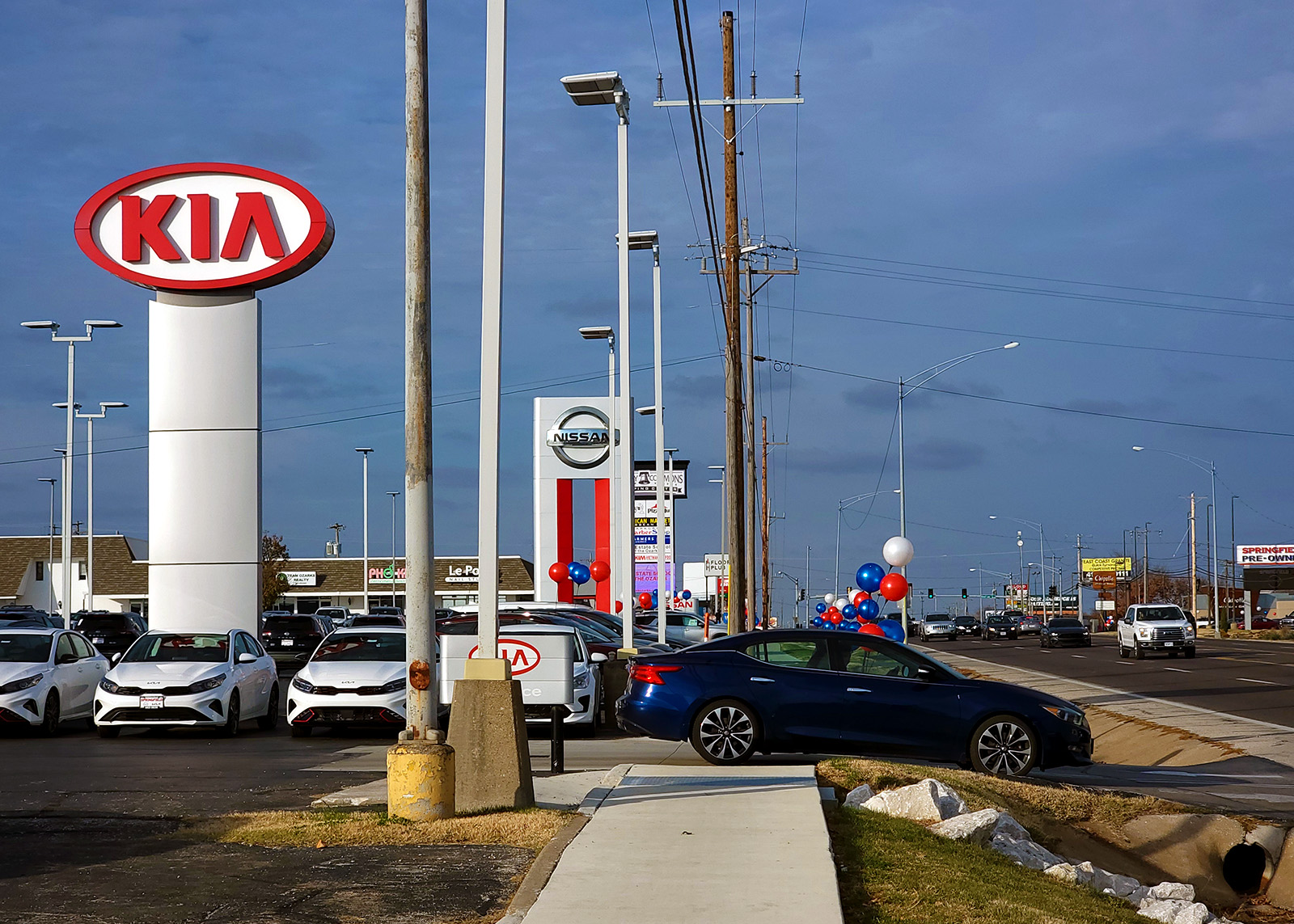OPINION|
On Saturday my wife and I were haggling with a car salesman over the price of a used Nissan Altima with 137,000 miles on it.
Her 2002 Mazda Protege had expired; we sold it to a salvage place and were glad to get $350.
To the best of my recollection, we went to see this Altima because my wife had seen it priced at $8,500. Yet here we were with a salesman who was telling us the price fluctuates daily and he actually could sell it that day to somebody else — maybe at a car auction — for $9,600.
My first thought was: Why haven't you done that? Why waste your time with two misguided people who showed up believing the price was $8,500?
Also, I wondered: Is the price of a car like a stock? Up one day and down the next?
Sorry Steve, the Dow Jones Used Car Index rose today and that'll cost you another $1,000.
I'd never before heard the phrase ‘Data Dots'
As part of this haggling, the words “administrative fee” came up to the tune of $500-something, and then the words, “Data Dots.”
I had never before heard those words before.
If we truly wanted the Altima with “Data Dots,” it would cost us another $200-something. That would provide us with enough dots to coat most of the car.
We were told the coating of dots would lower the chances of some ne'er-do-well snipping off a part of the car to sell it.
The “Data Dots” are an identification and anti-theft security system applied as a coating on cars and — from what I've read — other valuable assets, including cattle.
You put the coating on and then you register the car, or Hereford, on a national registry.
The application uses a polyester substrate of micro-dots, each the size of a grain of sand, and each of them etched with a tiny identification number.
No, I don't know what “substrate” means. I've already got enough to figure out here.
I admit I was somewhat interested in “Data Dots.” A few years ago, I had the catalytic converter sawed off from under my car.
‘No' to the Data Dots and ‘No' to the car

You are supposed to somehow mark your vehicle with a decal that lets the would-be thieves know you are “Data-Dots” protected. In theory, they see the decal and instantly conclude they will suffer horrible legal consequences if they so much as touch your vehicle.
In addition, my wife and I were told, the would-be purchaser of the stolen part — the “fence,” in police parlance — would use a black light and a magnifier to read the ID number on a dot and not purchase the item for fear of those same horrible legal consequences.
It occurs to me that if I were the “fence” in this scenario, the last thing I would want to do is use a black light and a magnifier to prove conclusively that I knew the item was stolen — especially if I was going to buy it regardless.
We said “no,” we didn't want to pay $200-something for “Data Dots.” Although it sounded interesting, I wondered:
Don't people who buy stolen catalytic converters, for example, already know they are stolen and really don't care?
Do thieves at 3 a.m. take the time to read decals on vehicles they are about to abuse?
If so, wouldn't it be cheaper just to buy a decal for your car that says “Warning! High Voltage!”
Finally, what good is the return of my sawed-off catalytic converter months later?
You don't drive around for weeks without one waiting for your catalytic converter to be recovered. Your car would sound like a Boeing 777.
We didn't buy the Altima.
Good review and words of wisdom from SGF police

I have done some reading on DataDot Technology, the company founded in Australia that has been the main force behind the new technology.
A Wired magazine story way back in 2002 offered a favorable overview. It said BMW Australia had agreed to place these dots on all new vehicles sold in Australia and the story cited some evidence that theft rates and insurance rates were decreasing.
Nevertheless, my gut feeling told me that someone with a reciprocating saw and a meth addiction is not going to pay much attention to my “Data Dots” security measures.
I asked Springfield police for words of wisdom on Data Dots, and here's what police spokesperson Cris Swaters had to say:
“In relation to auto theft investigations, this could be useful in instances where we come across a large number of vehicle parts and accessories.
“However, as far as lowering the occurrence of auto thefts, detectives don’t believe it would deter many would-be thieves. If the vehicle had a sticker on it advertising the use of the technology, thieves likely wouldn’t know what it is.
“Any additional resources available to law enforcement that can aid an investigation is a positive, even though it may not deter or reduce the crime.”
This is Pokin Around column No. 146.

